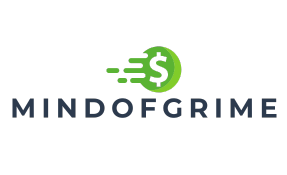Table of Contents
ToggleIn a world where credit cards seem to grow on trees and loans whisper sweet nothings, understanding debt isn’t just smart—it’s essential. Imagine navigating the financial jungle without a map; that’s what life feels like for many without a grasp on debt knowledge. It’s time to face the music and learn how to tango with those pesky interest rates and payment plans.
Debt might seem like that clingy ex who just won’t let go, but with the right knowledge, it can transform from a burden into a manageable partner. By mastering the ins and outs of debt, individuals can dodge pitfalls and make informed decisions that lead to financial freedom. So, buckle up and get ready to dive into the world of debt knowledge—because who said finance can’t be fun?
Understanding Debt Knowledge
Debt knowledge encompasses understanding various aspects of debt, including types, interest rates, repayment plans, and the effects on financial health. Gaining clarity on these elements empowers individuals to manage their finances effectively.
Definition of Debt Knowledge
Debt knowledge refers to the comprehension of financial obligations and the mechanisms involved in borrowing. It includes awareness of loan types such as secured and unsecured debts, understanding terms like interest rates and repayment schedules, and recognizing the risks associated with carrying debt. Knowledge about credit scores, debt-to-income ratios, and how they impact one’s financial standing also falls under this definition.
Importance of Debt Knowledge
Debt knowledge plays a crucial role in personal finance management. Individuals who understand their debt obligations can make informed decisions that prevent financial strain. Effective debt management leads to improved credit scores and greater borrowing power. Recognizing the costs associated with different debt types, including interest rates and fees, allows for better budgeting. Without this knowledge, one might face pitfalls such as accumulating unmanageable debt or falling prey to predatory lending practices. Developing debt knowledge fosters financial literacy and empowers individuals to take charge of their financial futures.
Types of Debt

Understanding types of debt is crucial for effective financial management. Two main categories often emerge: secured and unsecured debt, along with the distinction between good and bad debt.
Secured vs. Unsecured Debt
Secured debt requires collateral, giving the lender rights to the asset if payments are missed. Mortgages and auto loans serve as examples of secured debt. These loans typically have lower interest rates due to reduced risk for lenders. Unsecured debt, on the other hand, does not involve collateral, making it riskier for lenders. Credit cards and personal loans fall into this category. Higher interest rates accompany unsecured debt because lenders cannot claim assets if a borrower defaults.
Good Debt vs. Bad Debt
Good debt contributes positively to financial health, potentially increasing future wealth. Education loans are an example, as they can lead to better job opportunities and higher earnings. Bad debt, in contrast, tends to harm financial stability. Personal loans taken for non-essential spending often create more financial strain. High-interest credit card debt exemplifies this type, leading to ongoing payments without clear financial benefits. By understanding these distinctions, individuals can make informed borrowing choices.
Key Components of Debt Knowledge
Individuals must grasp the fundamental aspects of debt to navigate financial obligations effectively. Several key components form the foundation of debt knowledge.
Interest Rates
Interest rates represent the cost of borrowing money. Fixed interest rates remain constant throughout the loan term, while variable rates fluctuate based on market conditions. Lenders assess a borrower’s creditworthiness, impacting the interest rate offered. Higher credit scores usually lead to lower interest rates. Individuals should understand how interest accrues and affects the overall repayment amount. Monitoring interest rate trends helps borrowers make timely decisions about refinancing options and debt management.
Loan Terms
Loan terms specify the duration in which a borrower repays a loan. Common loan terms range from three to thirty years, depending on the type of loan. Shorter terms typically result in higher monthly payments but lower overall interest paid. Conversely, longer terms allow for smaller monthly payments but increase total interest costs. Borrowers need to evaluate the terms that suit their financial situation, ensuring they select loans aligned with their ability to repay. Understanding the importance of loan terms informs individuals about potential financial commitments and obligations.
Credit Scores
Credit scores serve as a numeric representation of a borrower’s creditworthiness. Scoring ranges from 300 to 850, with higher scores denoting better credit history. Lenders utilize credit scores to assess the risk associated with lending money. Factors influencing credit scores include payment history, credit utilization, and length of credit history. Regularly checking credit scores helps individuals identify areas for improvement. Individuals can enhance their credit scores by making timely payments and managing existing debt. Understanding credit scores empowers individuals to secure favorable borrowing terms and improve financial stability.
Developing Debt Knowledge
Understanding debt knowledge involves leveraging various resources and tools effectively. Individuals can enhance their financial literacy by utilizing educational materials and interactive platforms.
Educational Resources
Numerous educational resources exist to deepen understanding of debt. Online courses provide structured learning about managing debt and improving financial skills. Tutorials and webinars from financial experts furnish practical insights on topics like interest rates and repayment strategies. Moreover, books and articles offer diverse perspectives on financial health. Community workshops also present opportunities for in-person learning and networking. Lastly, many non-profit organizations offer free financial literacy programs targeting debt management.
Tools and Calculators
Several tools and calculators simplify debt management. Debt repayment calculators allow individuals to visualize payment schedules under various terms. Budgeting apps help track expenses alongside debt obligations, promoting responsible spending habits. Interest rate calculators provide clarity on potential costs based on different rates and loan amounts. Additionally, credit score monitoring tools alert individuals to changes in their scores, enabling informed financial decisions. Engaging with these tools can enhance understanding of personal finances and support efficient debt management.
Understanding debt is crucial for anyone looking to navigate the financial landscape confidently. With the right knowledge and resources, individuals can transform their financial situations and avoid common pitfalls. By mastering the intricacies of debt types, interest rates, and repayment plans, they can make informed decisions that enhance their financial health.
Embracing the learning process not only fosters financial literacy but also empowers individuals to take control of their financial futures. As they develop their debt knowledge, they’ll find themselves better equipped to manage obligations and ultimately achieve greater financial freedom.










